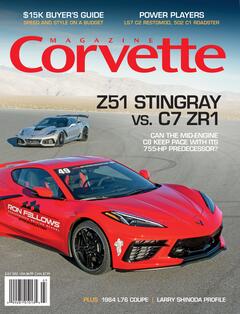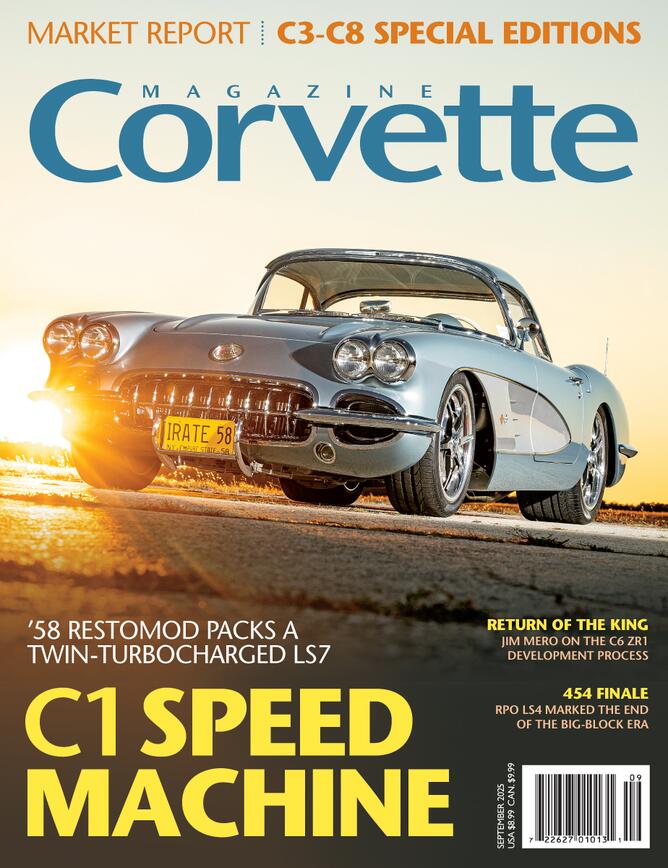Much has already been written about the differences between the seventh- and eighth-generation Corvettes, in particular the latest model’s mid-engine placement and chassis design. But what does that mean for marque enthusiasts long accustomed to a front-engine setup? Does the new C8 require learning entirely different driving techniques?
That’s where the Ron Fellows High-Performance Driving School can be of immense value. GM executives apparently agree, as new-C8 buyers get a deep discount on the price of the two-day owner’s course ($1,000 instead of $3,695, including one night’s free stay at the Spring Mountain Motor Resort in Pahrump, Nevada, where the classes are held). Higher levels of schooling—Intro to Tracking, Advanced Track Day, and Track Masters—are also available. Clearly Corvette management wants buyers to get the most out of their performance investment, up to and including participating in track days and other high-performance driving events.
For firsthand verification of the value of this approach, we recently attended the C8 two-day owners’ school to compare it with our prior experience at the C7 ZR1 school (“Training Day,” June ’19). While the basics of the coaching are similar, we did come across some enhancements intended to optimize a driver’s skills, just as the C8 platform optimizes the Corvette’s performance. It’s no surprise, then, that we also encountered several participants who were repeat attendees, since students tend to learn something new every time they return.
One in particular, Barry Konken of Jerry’s Chevrolet in Boise, South Dakota, annually rounds up a group of his loyal Corvette customers, along with his teenage son, Jack, to join the fun. Some owners initially wondered why they should attend, since they didn’t plan to run their cars in competition events.

“It’s not about racing,” Konken explains. “It’s about getting to know your car.” Moreover, these racing techniques can even come in handy when encountering dodgy situations on the street.
He also privately acknowledged that some novice Corvette buyers might find the car’s extraordinary track prowess to be challenging to fully exploit. So the Ron Fellows school assists them in getting up to speed, literally. A repeat attendee for several years, Konken also notes that the Spring Mountain staff manages to keep improving the program: “It gets better every year.”
Though the course includes both on-track and classroom components, “Most of the learning takes place in the car,” notes Rick Malone, chief driving instructor for the school. And once out on the road course, Malone finds the latest Corvette to be immensely capable. “The ZR1 was a home run,” he says. “The C8 is a grand slam.”
Speed vs. Finesse
For a quick overall comparison, the supercharged ZR1 feels like more of a hot rod, especially when exceeding 140 mph on the straights, while the C8 scampers through the twisties in short order, reportedly a full second quicker on the road course overall. According to Malone, experienced drivers, including racer Ron Fellows, have been impressed by how much easier the new car is to handle. On their first outings, “We couldn’t wipe the smiles off our faces,” he says. In particular, he notes how the C8 comes off the corners faster, thanks largely to its new, more rearward engine placement.

Chalk that up to the automotive engineer’s formula for the “polar moment of inertia,” basically a way of describing a more compact weight distribution in the center of the car, allowing for easier rotation around an apex. In technical terms, when the mass distribution is close to the axis of rotation, it has a low polar moment of inertia.
Putting it simply, a mid-engined car has most of its mass within its wheelbase, improving cornering turn-in. As a crude analogy, imagine driving a nail with a long-handled sledge versus a shorter framing hammer. It’s the difference between brute force and sure-handed finesse. No wonder Zora Arkus-Duntov lobbied to make this change way back in the early ’60s.
In addition to hustling around the 1.6-mile course, Malone and his 27 other seasoned instructors cover basic driving exercises in car control, such as braking/accident avoidance, turn-in on a tight oval, figure-8s on wet pavement, and side-scanning on a serpentine course. The latter included an unnerving slow-speed run on the paddock with the sunshade blocking out the front windshield, forcing the driver to look to the side. All told, these drills help drivers integrate various driving elements into the seamless whole of better car handling.
So what are some new elements of the C8 school? One of the big differences is an increased emphasis on braking skills, partly because the mid-engine layout of the C8 puts more weight on the rear wheels, and transferring it to the front tires is a key aspect of the turn-in process. In addition, a careful review of the students’ PDRs (Performance Data Recorders) indicated that many were understandably “throttle happy” and not using their brakes enough. The racers’ dictum “Slow in, fast out” applies here.

Using more braking might sound counterintuitive to increasing road-course speed, but not doing so is like leaving a valuable tool in the shed, since it provides more grip on the front tires. And it has minimized the number of off-road excursions from the track. (The Ron Fellows school still has an unblemished record of no collisions on the track, thanks to meticulous safety measures.)
Early on in the class I found this change to be of real value, as the C8’s rapid acceleration got away from me on one sharp turn. But the binders’ fierce and immediate slowing was a welcome relief. Two wheels off and you have to pit; four wheels off ends your session. Either mistake is an exercise in maximum pucker factor.
Other alterations from the previous C7 classes (some of which were added during the special ZR1 program) include launch control, more lead/follow laps, and autocross, along with a review of each student’s PDR recording on a laptop. This visual presentation provides excellent feedback for drivers on the amount of braking employed—or lack of it, along with other key performance indicators such as the tach, throttle, and g-meter. Note that launch times are typically slightly slower than the manufacturer’s numbers due to the higher elevation of the Spring Mountain track.
Are the school cars any different from one delivered by a dealer? Only slight changes are made as recommended by Chevrolet for track duty, such as adding a couple extra quarts of transmission fluid and increasing the tire camber setting to negative-three degrees. This amount of camber ensures sufficient adhesion in the curves as the body rolls outward. (This is not recommended for street duty, though, as it would eventually cause uneven tire wear.)

One other change made by technicians at the Spring Mountain maintenance garages is adding some aluminum foil on the wires for the rear shock towers, which have a soy-based coating that is appetizing to local rodents. (Owners of C8s might take note of this clever-yet-simple protective measure.)
A tech-talk session is also included with the two-day owners school, which provides some valuable orientation on various features of the C8. Where to attach tow hooks, and various manual releases for both doors and hood, are noted. Other valuable explanations cover all the different driver modes and settings, along with the plethora of buttons and switches, far more than on the C7.
Overall, much of the focus in driver coaching is on mental and visual aspects—having your head in right place and keeping your eyes on where you want to go. Your body motions and the car will then flow right into the proper line if you stay alert and relax. Combining all the various principles and techniques takes time, but it all comes together by the last runs.
Riding with instructors for a few laps helps immensely, too, given their hands-on familiarity with both the car and course. After experiencing an instructor’s intense driving techniques, all the students began pushing harder on both the brakes and throttle. Of course, there’s no such thing as a perfect lap, but all the participants seemed a bit wistful toward the end of the two-day session. (“Just a few more laps, please!”)
The finale is the autocross competition, where students compete for the best time around the cones on the paddock. It’s harder than it looks, with tight turns and decreasing-radius curves. One useful tip from Malone: When diving into a turn, lift the throttle to unlock the LSD rear end, so the car weaves around more smoothly.
Previously in the ZR1 class I managed a third-place finish, but this time around I had the second-fastest time for my group. Thanks to some capable instruction, this loose nut behind the wheel is gradually getting a little tighter.





